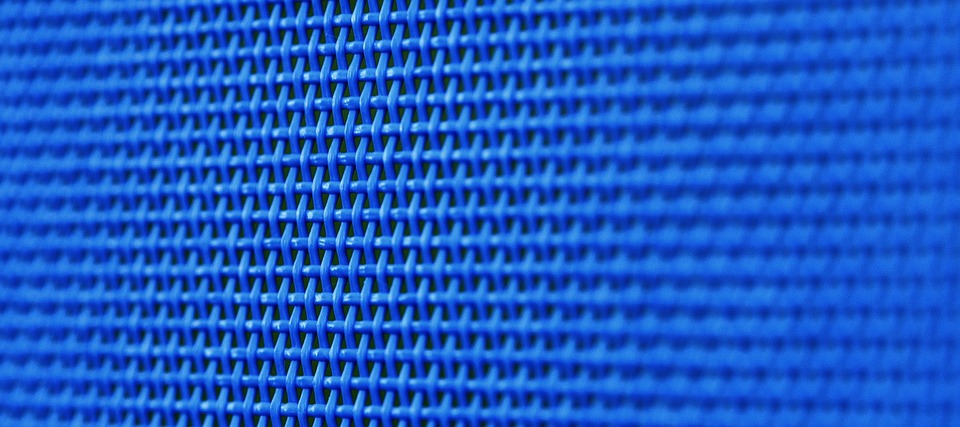In the world of fabrics, the choice between woven and non-woven materials is pivotal and based on the requirements of your product. Over the years, we’ve been part of the textile selection to meet the specific needs of our clients, and this expertise has culminated in an understanding of the distinctions between woven and non-woven fabrics. In this article, we’ll breakdown difference between woven and non woven fabric, offering our first hand insights into these two fabric types and which type you should choose based on what you plan to make.
Woven Fabrics
Clothing and general fabric materials use woven fabrics because they are more cost effective than non-woven and are easy to source. Weaving numerous threads together perpendicularly to each other creates woven fabrics. The threads that run vertically through the fabric are the warp threads, and the weft is the thread that runs horizontally. Simply put, the weft is the traverse thread and the combination of warp threads is the base. To weave, you simply alternate going over and under a warp thread with a weft thread. Preferably, the process of weaving would occur with the warp threads stretched on a loom. The type of thread or yarn used directly impacts the strength of the textile. Combining multiple different materials gives the textile a variety of properties.
Products Commonly Made from Woven Fabrics:
- Clothing: including shirts, pants, dresses, and jackets.
- Bed Linens: Bed sheets, pillowcases, and duvet covers are often made from woven fabrics.
- Towels: Bath towels, hand towels, and kitchen towels are typically woven.
- Upholstery: Woven fabrics are commonly for furniture upholstery,
- Tablecloths and Napkins: Many table linens are woven textiles.
- Jeans: Denim is a type of woven fabric.
- Curtains and Draperies: Window treatments are often made from woven materials.
- Tote Bags: Woven fabrics are used to create durable tote bags.
- Backpacks: Many backpacks are made from woven materials for strength.
Non-Woven Fabrics
Non-woven fabrics are long fibers that are bonded together by heat, chemical, or mechanical treatment. There is no weaving or manual construction involved. They have many different properties; including liquid resistance, being stretchable, better thermal insulation than woven fabrics, and can be resistant to bacteria. These fabrics can also be made stronger by adding a supportive backing. They also tend to be the more affordable choice, as these fabrics are less expensive to produce and quicker to manufacture. In most cases, woven fabrics are more durable and strong than non-woven. This is because woven fabrics are reinforced by thread crossing thread, which creates a strong barrier.
While a non-woven could be stronger than woven fabric, its durability is entirely dependent on its materials. For example, a disposable plastic bag and a surgical gown are both non-woven materials, but it is obvious which needs to be stronger.
Products Made from Non-Woven Fabrics:
- Disposable Face Masks: Single-use masks are made from non-woven materials for filtration.
- Disposable Wipes: Wipes for cleaning, baby care, and makeup removal often use non-woven fabrics.
- Medical Gowns and Drapes: Non-woven fabrics are common in medical settings
- Diapers: disposable diapers is typically made from non-woven materials.
- Sanitary Napkins and Tampons: Feminine hygiene products often incorporate non-woven fabrics.
- Industrial Filters: Non-woven fabrics are used in air and liquid filtration systems.
- Geotextiles: Non-woven geotextiles are used in construction for erosion control and drainage.
- Disposable Food Packaging: Some food containers and packaging use non-woven materials.
- Automotive Interiors: Car interiors, including headliners and carpeting, use non-woven fabrics.
Choosing Woven vs. Non-Woven
When designing a product, the choice between woven and non-woven fabrics is a critical decision. These terms serve as overarching categories encompassing a wide range of fabric types, including nylon, denim, cotton, polyester, and more. Your choice sets the foundation for your product’s characteristics.
Non-woven fabrics, in particular, offer advantages in certain applications. Due to their bonding process, they may not withstand laundering as well as woven fabrics. However, this makes them an excellent choice for single-use items. This property is especially valuable in the production of disposable personal protective equipment (PPE) and sanitary products. The ease of mass production and inherent bacterial resistance of non-woven fabrics further enhance their suitability for these essential and hygienic items.

